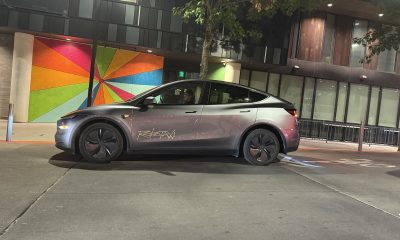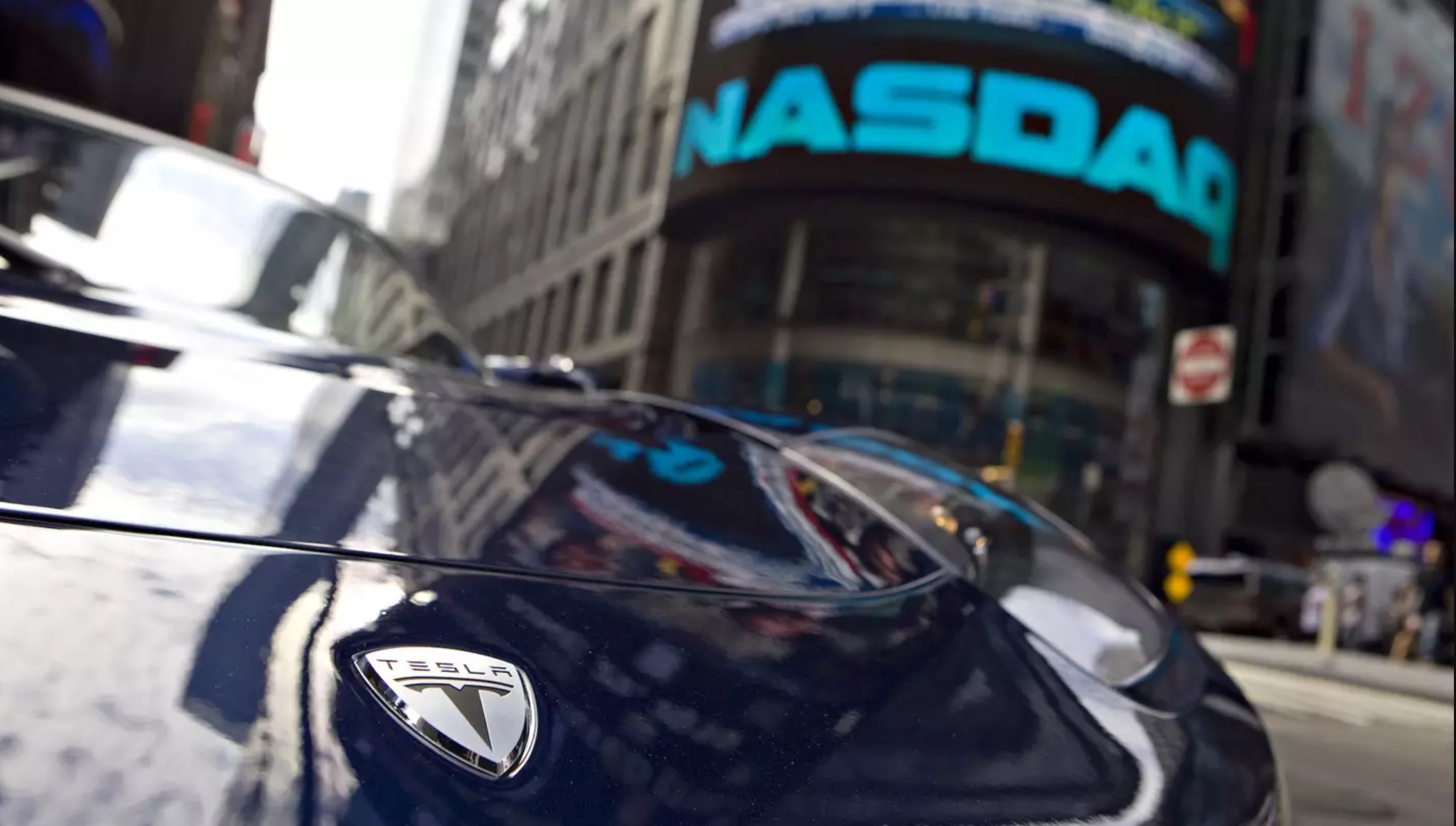

Energy
Tesla (TSLA) went from IPO to beating Ford in value in just seven years
The story of Tesla is a fascinating one by any measure: a group of Silicon Valley entrepreneurs get together to start a car company, a feat that business-school professors have been using as the definition of economic impossibility for decades, and after only a few years they build a company that rivals the Big Three, and a car that earns every accolade the industry has to offer. Of course, there are several near-death experiences along the way to hold our interest.
This stranger-than-fiction story has been told in various videos and one full-length book, and pieces of it have been told in thousands of print and online articles. For those who prefer a quick, easy-to-digest format, Global Energy Metals has summarized the Tesla story in a large infographic, which comes to us courtesy of Visual Capitalist.
The Tesla saga began with the low-volume Roadster, but the startup became “a real company” with its 2010 initial public stock offering (IPO), which raised some $226 million in capital and started what was to be a stomach-churning roller-coaster ride of growth.
Tesla was the first American car company to make an IPO since Ford went public in 1956.
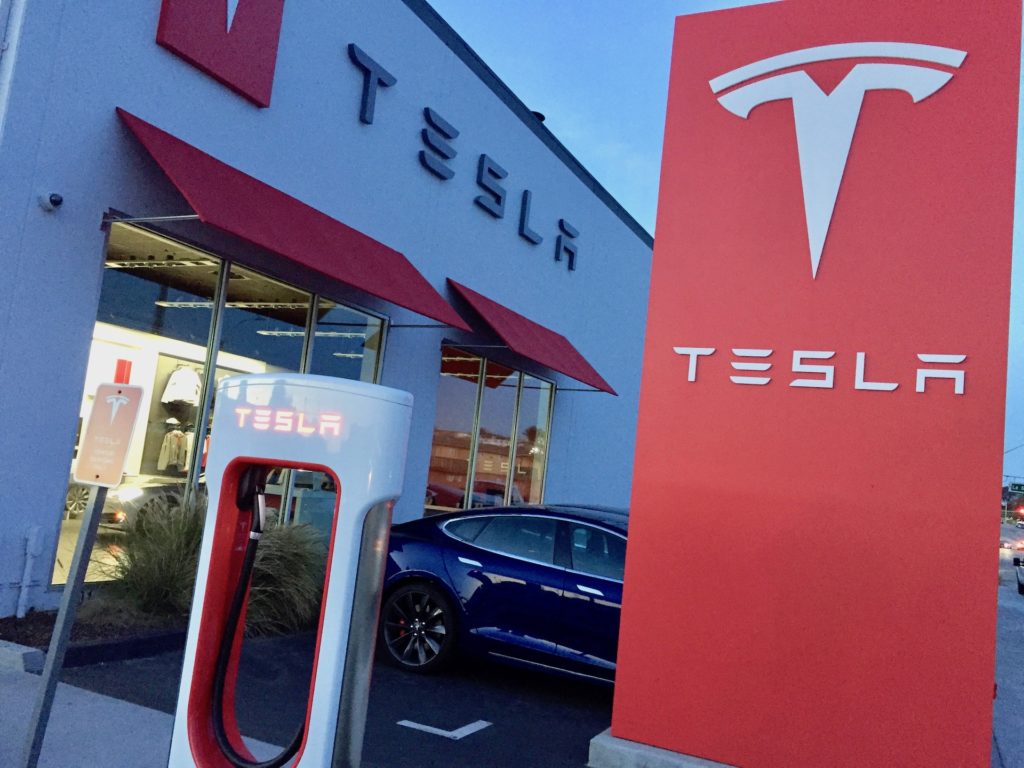
Tesla Store, Service Center and Supercharger station in Monterey, CA [Photo: Teslarati]
Ford was already a large and well-known company at the time, and its IPO was the largest in Wall Street’s history. In contrast, Tesla in 2010 was a tiny niche automaker that few outside the auto industry or the environmental community had heard of.
Stock market analysts were skeptical, to say the least, and short sellers (speculators who place bets that a company’s stock will decline in price) flocked to the stock (the short interest in Tesla continues to be huge, despite the fact that the shorts have lost billions).
Despite the wild gyrations that are typical of a high-flying tech stock, the trend for TSLA has been ever upward. A mere seven years after its IPO, Tesla’s market value had surpassed Ford’s, despite the fact that the older company’s sales volume is many times greater. As of the end of 2017, Ford’s stock market capitalization was $49.9 billion, while Tesla’s had reached $52.3 billion.
A tremendous amount happened in those seven years. Tesla acquired its massive Fremont factory in a sweetheart deal with Toyota. It discontinued the Roadster and moved on to the second phase of its master plan, building two native EVs, the now-famous Model S and Model X. The two vehicles went on to win just about every award and accolade in existence, including being recognized as the “safest car ever tested” by the NHTSA and the “best car ever tested” by Consumer Reports. Over 200,000 units have been sold to date.
With partner Panasonic, Tesla built its gargantuan Gigafactory in Nevada, with the objective of reducing the cost of lithium-ion battery packs by 30%. Tesla introduced the Powerwall, a key piece of the puzzle of electric vehicles and home solar energy generation. It introduced Autopilot technology and built out its worldwide Supercharger network.
In 2016, Tesla announced the culmination of its master plan: Model 3, a mid-priced EV for the mass market. The new EV quickly racked up almost half a million pre-orders, making it arguably the most successful product launch in history.
With Model 3 now showing up on roads around the country, Elon Musk has achieved the quixotic goal that he set over a decade ago. However, the Tesla story is just beginning: in the pipeline are the Tesla Semi, a new Roadster, solar roof tiles, massive energy storage projects in Australia, Puerto Rico and elsewhere, loads more Superchargers and all kinds of nifty new features, delivered via over-the-air software updates. The future for Tesla, and for those of us who write about it, looks as bright as the California sun.
Infographic

===
Note: Article originally published on evannex.com, by Charles Morris
Infographic: Visual Capitalist
Energy
Tesla Lathrop Megafactory celebrates massive Megapack battery milestone
The Tesla Megapack is the backbone of Tesla Energy’s battery deployments.
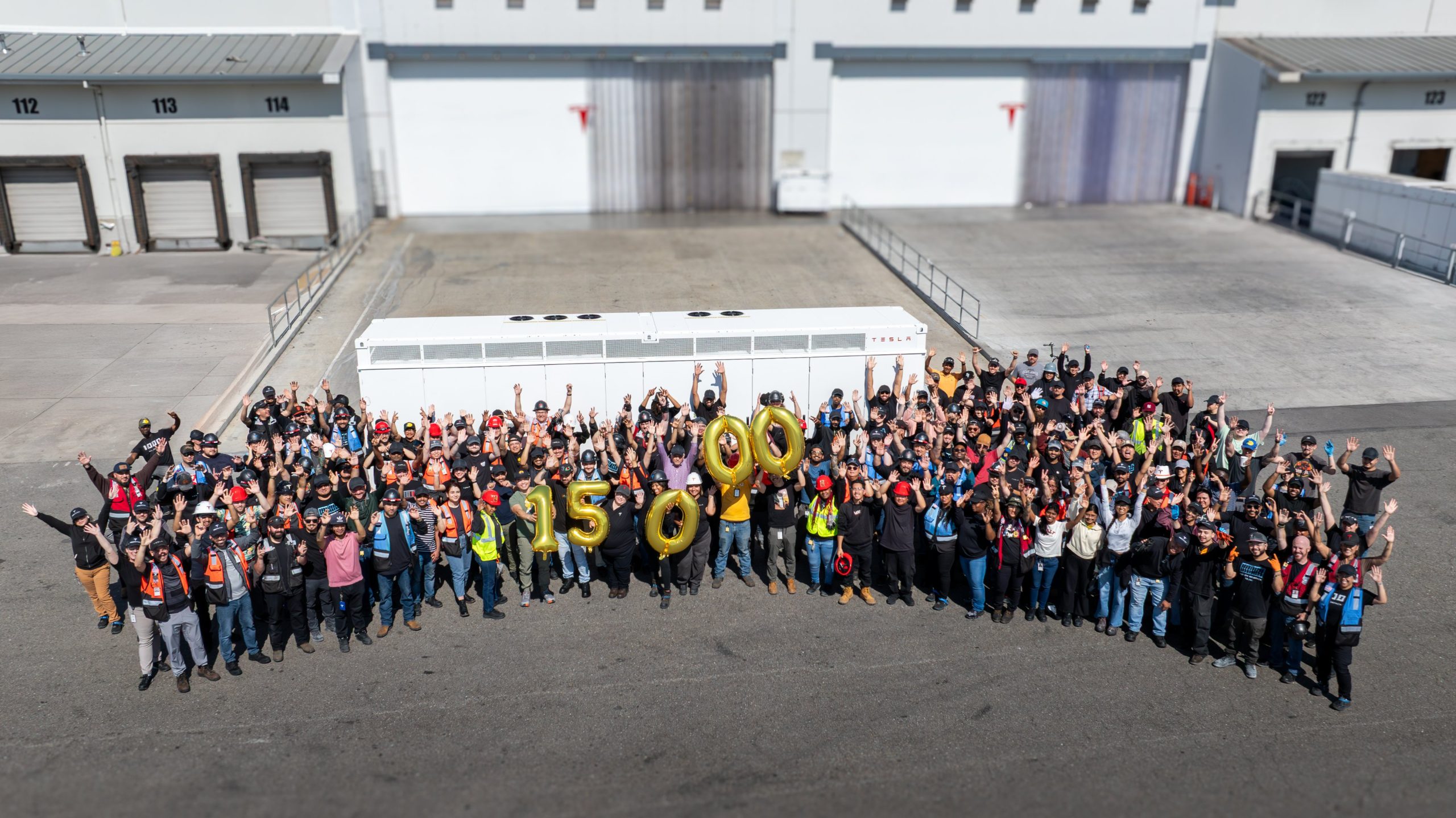
The Tesla Lathrop Megafactory recently achieved a new milestone. As per the official Tesla Megapack account on X, the Lathrop Megafactory has produced its 15,000th Megapack 2 XL battery.
15,000 Megapack Batteries
Tesla celebrated the milestone with a photo of the Lathrop Megafactory team posing with a freshly produced Megapack battery. To commemorate the event, the team held balloons that spelled out “15,000” as they posed for the photo.
The Tesla Megapack is the backbone of Tesla Energy’s battery deployments. Designed for grid-scale applications, each Megapack offers 3.9 MWh of energy and 1.9 MW of power. The battery is extremely scalable, making it perfect for massive energy storage projects.
More Megafactories
The Lathrop Megafactory is Tesla’s first dedicated facility for its flagship battery storage system. It currently stands as the largest utility-scale battery factory in North America. The facility is capable of producing 10,000 Megapack batteries every year, equal to 40 GWh of clean energy storage.
Thanks to the success of the Megapack, Tesla has expanded its energy business by building and launching the Shanghai Megafactory, which is also expected to produce 40 GWh of energy storage per year. The ramp of the Shanghai Megafactory is quite impressive, with Tesla noting in its Q1 2025 Update Letter that the Shanghai Megafactory managed to produce over 100 Megapack batteries in the first quarter alone.
Tesla Energy’s Potential
During the first quarter earnings call, CEO Elon Musk stated that the Megapack is extremely valuable to the energy industry.
“The Megapack enables utility companies to output far more total energy than would otherwise be the case… This is a massive unlock on total energy output of any given grid over the course of a year. And utility companies are beginning to realize this and are buying in our Megapacks at scale,” Musk said.
Energy
Tesla Megapacks powers the xAI Colossus supercomputer
Tesla Megapacks step in to stabilize xAI’s Colossus supercomputer, replacing natural gas turbines. Musk’s ventures keep intertwining.

Tesla Megapack batteries will power the xAI Colossus supercomputer in Memphis to ensure power stability. The collaboration between Tesla and xAI highlights the synergy among Elon Musk’s ventures.
The artificial intelligence startup has integrated Tesla Megapacks to manage outages and demand surges, bolstering the facility’s reliability. The Greater Memphis Chamber announced that Colossus, recently connected to a new 150-megawatt electric substation, is completing its first construction phase. This transition addresses criticism from environmental justice groups over the initial use of natural gas turbines.
“The temporary natural gas turbines that were being used to power the Phase I GPUs prior to grid connection are now being demobilized and will be removed from the site over the next two months.
“About half of the operating turbines will remain operating to power Phase II GPUs of xAI until a second substation (#22) already in construction is completed and connected to the electric grid, which is planned for the Fall of 2025, at which time the remaining turbines will be relegated to a backup power role,” the Chamber stated.
xAI’s rapid development of Colossus reflects its ambition to advance AI capabilities, but the project has faced scrutiny for environmental impacts. The shift to Megapacks and grid power aims to mitigate these concerns while ensuring operational continuity.
The Megapack deployment underscores the collaboration among Musk’s companies, including Tesla, SpaceX, Neuralink, and The Boring Company. Tesla appears to be the common link between all of Musk’s companies. For example, The Boring Company built a tunnel in Giga, Texas. In addition, Musk has hinted at a potential collaboration between the Tesla Optimus Bot and Neuralink. And from January 2024 to February 2025, xAI invested $230 million in Megapacks, per a Tesla filing.
Tesla Energy reported a 156% year-over-year increase in Q1 2025, deploying 10.4 GWh of storage products, including Megapacks and Powerwalls. Tesla’s plans for a new Megapack factory in Waller County, Texas, which is expected to create 1,500 jobs in the area, further signal its commitment to scaling energy solutions.
As xAI leverages Tesla’s Megapacks to power Colossus, the integration showcases Musk’s interconnected business ecosystem. The supercomputer’s enhanced stability positions xAI to drive AI innovation, while Tesla’s energy solutions gain prominence, setting the stage for broader technological and economic impacts.
Energy
Tesla Energy celebrates one decade of sustainability
Tesla Energy has gone far since its early days, and it is now becoming a progressively bigger part of the company.
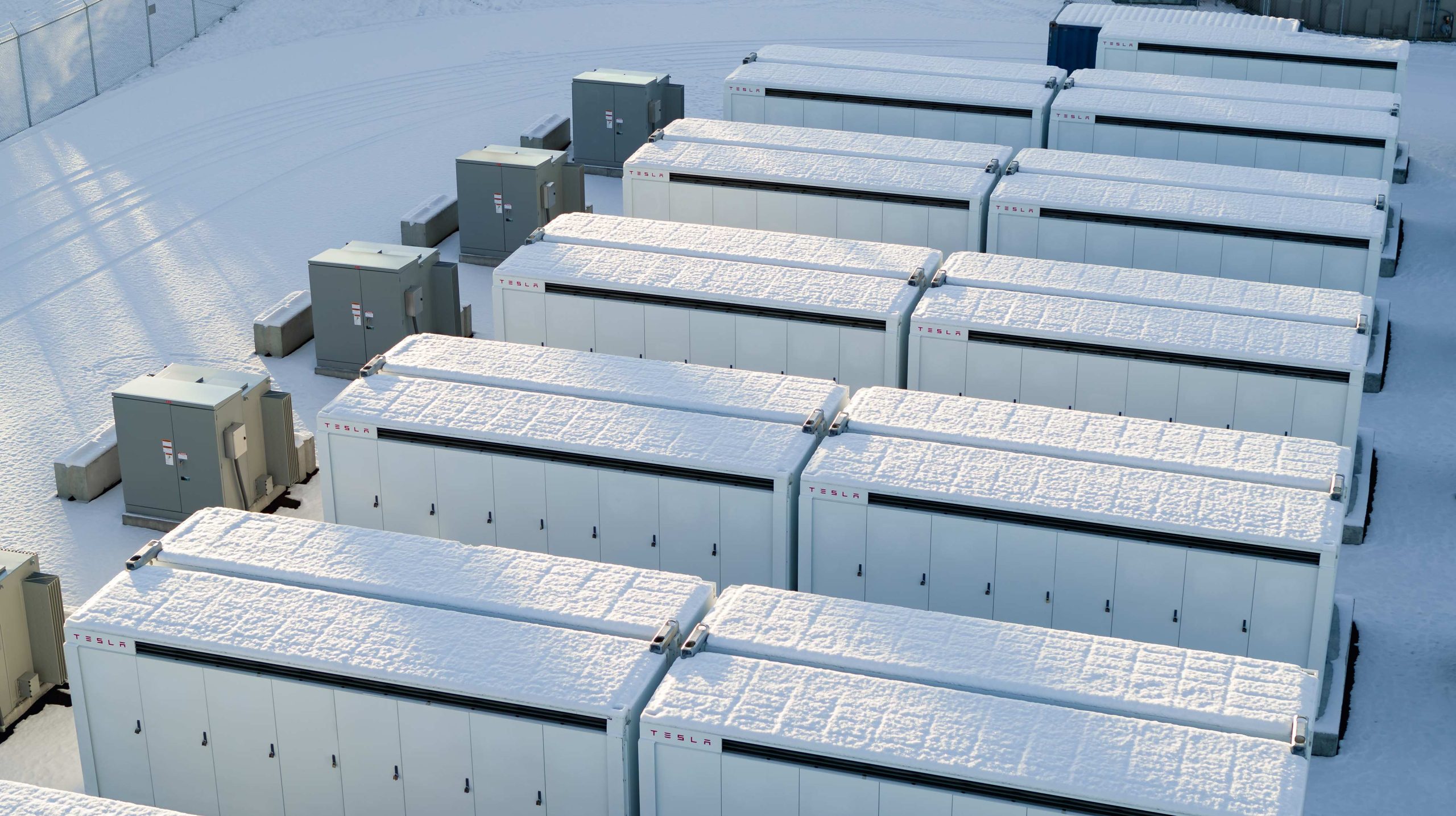
Tesla Energy recently celebrated its 10th anniversary with a dedicated video showcasing several of its milestones over the past decade.
Tesla Energy has gone far since its early days, and it is now becoming a progressively bigger part of the company.
Tesla Energy Early Days
When Elon Musk launched Tesla Energy in 2015, he noted that the business is a fundamental transformation of how the world works. To start, Tesla Energy offered the Powerwall, a 7 kWh/10 kWh home battery system, and the Powerpack, a grid-capable 100 kWh battery block that is designed for scalability. A few days after the products’ launch, Musk noted that Tesla had received 38,000 reservations for the Powerwall and 2,500 reservations for the Powerpack.
Tesla Energy’s beginnings would herald its quiet growth, with the company later announcing products like the Solar Roof tile, which is yet to be ramped, and the successor to the Powerwall, the 13.5 kWh Powerwall 2. In recent years, Tesla Energy also launched its Powerwall 3 home battery and the massive Megapack, a 3.9 MWh monster of a battery unit that has become the backbone for energy storage systems across the globe.
Key Milestones
As noted by Tesla Energy in its recent video, it has now established facilities that allow the company to manufacture 20,000 units of the Megapack every year, which should help grow the 23 GWh worth of Megapacks that have already been deployed globally.
The Powerwall remains a desirable home battery as well, with more than 850,000 units installed worldwide. These translate to 12 GWh of residential entry storage delivered to date. Just like the Megapack, Tesla is also ramping its production of the Powerwall, allowing the division to grow even more.
Tesla Energy’s Role
While Tesla Energy does not catch as much headlines as the company’s electric vehicle businesses, its contributions to the company’s bottom line have been growing. In the first quarter of 2025 alone, Tesla Energy deployed 10.4 GWh of energy storage products. Powerwall deployments also crossed 1 GWh in one quarter for the first time. As per Tesla in its Q1 2025 Update Letter, the gross margin for the Energy division has improved sequentially as well.
-

 News5 days ago
News5 days agoTesla Robotaxi’s biggest challenge seems to be this one thing
-

 News2 weeks ago
News2 weeks agoTesla confirms massive hardware change for autonomy improvement
-

 Elon Musk2 weeks ago
Elon Musk2 weeks agoElon Musk slams Bloomberg’s shocking xAI cash burn claims
-

 News2 weeks ago
News2 weeks agoTesla features used to flunk 16-year-old’s driver license test
-

 News2 weeks ago
News2 weeks agoTesla China roars back with highest vehicle registrations this Q2 so far
-

 News2 weeks ago
News2 weeks agoTexas lawmakers urge Tesla to delay Austin robotaxi launch to September
-

 News2 weeks ago
News2 weeks agoTesla dominates Cars.com’s Made in America Index with clean sweep
-

 News2 weeks ago
News2 weeks agoTesla’s Grok integration will be more realistic with this cool feature






